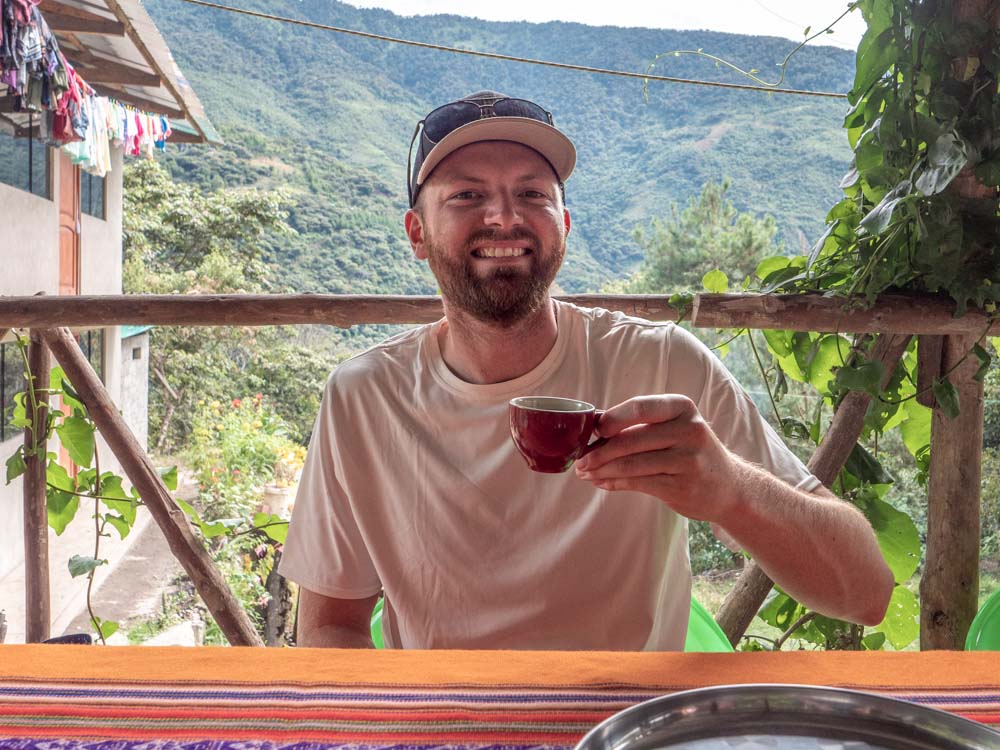Located less than a 90 minute drive to the northwest of Cusco you’ll stumble upon the other worldly Inca ruins of Moray Peru.
There are a number of important cultural sites just outside of Cusco and in this post we’ll discuss what you should expect when visiting the Moray Inca ruins.
Once you’re done reading this post be sure to check out some of my other Peru content including the Peru Video Travel Guide on my YouTube channel or the written version (best things to do in Cusco Peru) which is available on this blog!
Table of Contents
You’ll notice some links and advertisements from partner or affiliate sites throughout this post. I typically earn a small commission on any purchases made through those links at no additional cost to you. If you check those out, great. If not, I’m still happy you’re here!
What is Moray Peru known for?
If you’re familiar with Peruvian farming terraces then you probably have some idea of what this area was once used for. If you guessed farming, good job! That’s part of the answer.
Read on to learn why these Inca ruins are so peculiar!

The Inca and current Peruvian people are notoriously good at farming their mountainous landscape.
If you travel through the mountain regions of Peru you’ll surely notice fields of quinoa and other crops growing over the steep and rugged terrain.
The natives are pros at living off the land here. If you’re exploring cultural sites such as Pisac, Moray or Machu Picchu then you’re sure to stumble across Inca farming terraces.
What sets the ruins of Moray apart from other Inca sites is that many believe it was used to test crops throughout a variety of micro climates. The differences in elevation and direct sunlight result in a wider variety of growing conditions for the crops at Moray.
Where is Moray Peru located?
The ruins of Moray are located in Peru, roughly 50 kilometers northwest of Cusco. They are situated at an elevation of about 3,500 meters (11,500 feet).
Specifically, Moray is found in the Urubamba Valley of the Incas. The site is located just west of the village of Maras.
What was Moray used for?
What sets the ruins of Moray apart from other Inca sites is that many believe it was used to test crops throughout a variety of micro climates. The differences in elevation and direct sunlight result in a wider variety of growing conditions for the crops at Moray.
The Inca people who lived here may have used it like a giant agricultural science experiment! It’s impressive to imagine them studying how sunlight and temperature could affect crop yields.
Do I need a ticket for Moray Peru?
First off, you will need a ticket to enter Moray. To enter the ruins of Moray you’ll need a tourism ticket for the area. When we visited the ticket cost us 70 soles (about $20 USD) but also grants you access to Ollantaytambo, the ruins of Pisac and Chinchero.
This ticket is different from the one needed to visit Sacsayhuaman and the other Inca ruins located closer to Cusco. You should be able to purchase a ticket near the Moray entrance. Be sure to have cash on hand to purchase your ticket and for purchasing souvenirs from the locals who setup shop here.

Is Moray Peru worth visiting?
So, we booked our Moray trip as a full day excursion through Alpaca Expeditions that included stops at Pisac and The Maras Salt Mines beforehand. The day as a whole was amazing and we really enjoyed working with Alpaca Expeditions.

While the history of Moray is very interesting, the site as a whole is a bit underwhelming compared to Pisac or Maras.
Both of which I’d recommend many times over. Moray did feel a bit flat after we visited Pisac and Maras earlier in the day.
However, if you’re already planning to visit The Maras Salt Mines it might be worth popping over to Moray given it’s close proximity.
If you’re also planning to visit Pisac then the tourism ticket will already be a sunk cost so entering Moray won’t be an extra cost.
While I wouldn’t go out of my way to visit Moray on it’s own, if you find yourself nearby I’d make the small detour to witness Moray’s peculiarity firsthand!
You can browse Moray trips and other guided activities available from Cusco here. Cusco serves as a great jumping off point for exploring the region and if you haven’t booked your accommodations yet you can browse deals on hotels in Cusco here.
Check out these activities available in the area
Looking for more ways to fill out your trip itinerary? Be sure to check out the list of activities below from GetYourGuide.
Visit the nearby Maras Salt Mines
While I have a hard time suggesting you spend the 3-hour round trip drive to leave Cusco and visit Moray on its own, I can get behind it if you’re already planning to visit Maras. The Maras Salt Mines are well worth the visit.
The locals have come up with an ingenious way to direct water flowing from a salt water spring down into the mining pans.
Once trapped in the pans they harness the power of the sun to evaporate the water, leaving behind delicious pink salt!
Not only is the process practical but the whole operation is really cool to observe firsthand.

If you’re interested in learning more about The Maras Salt Mines you can read about my experience here.
A few of my other favorite activities we did during my trip to Peru included hiking to Humantay Lake, exploring Machu Picchu and completing the 5-Day Salkantay Trek. Be sure to check those out as you plan your Peruvian adventures!
I hope you found this post covering the Inca ruins of Moray Peru helpful and insightful to your trip planning process!

